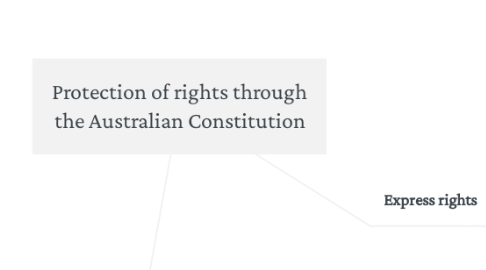Protection of rights through the Australian Constitution
by Besime DEMIROVSKI

1. Express rights
1.1. An express right is explicitly stated in the wording of the Constitution. It can only be removed or altered by changing the wording of the Constitution. In Australia, the Constitution can only be changed through a successful referendum or public vote. This differs from rights that exist in common law or in statute, which can be abolished or altered at any time by parliament passing a law to override them.
1.2. The five express rights protected in the Australian Constitution are the right to:
1.3. 1) Free interstate trade and commerce (section 92) – this right prevents parliament from treating interstate trade differently between states. It provides freedom of movement between states, without burden or hindrance.
1.4. 2) Not to be discriminated against by the Commonwealth on the basis of the state where you reside (section 117) – it is unlawful for the Commonwealth to discriminate against someone based on the state in which they live. However, the High Court has said that states can favour their own residents in limited circumstances, such as the right for only residents of a state to vote in elections for that state.
1.5. 3) Receive ‘just terms’ when property is acquired by the Commonwealth (section 51) – this means that the Commonwealth must pay fair and reasonable compensation for property that they compulsorily buy. The Commonwealth is only able to acquire property for a purpose or area for which it has the power to make laws.
1.6. 4) Trial by jury for indictable Commonwealth offences (section 80) – this provides citizens with the limited right to trial by jury, as it is guaranteed for indictable Commonwealth offences.
1.7. 5) A freedom of religion (section 116) – this provides citizens with a limited right to freedom of religion.
2. Implied rights


